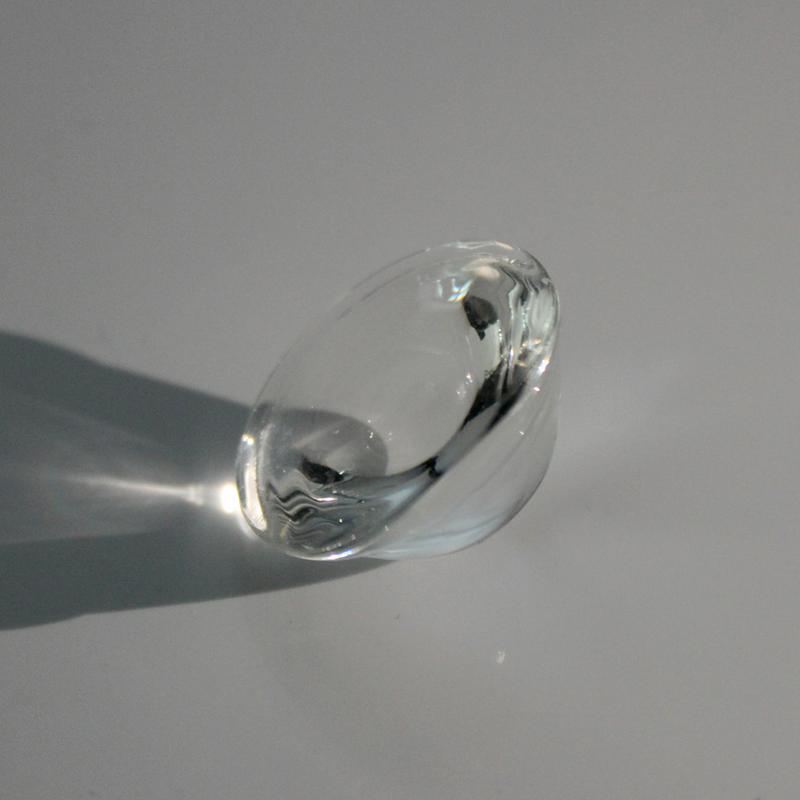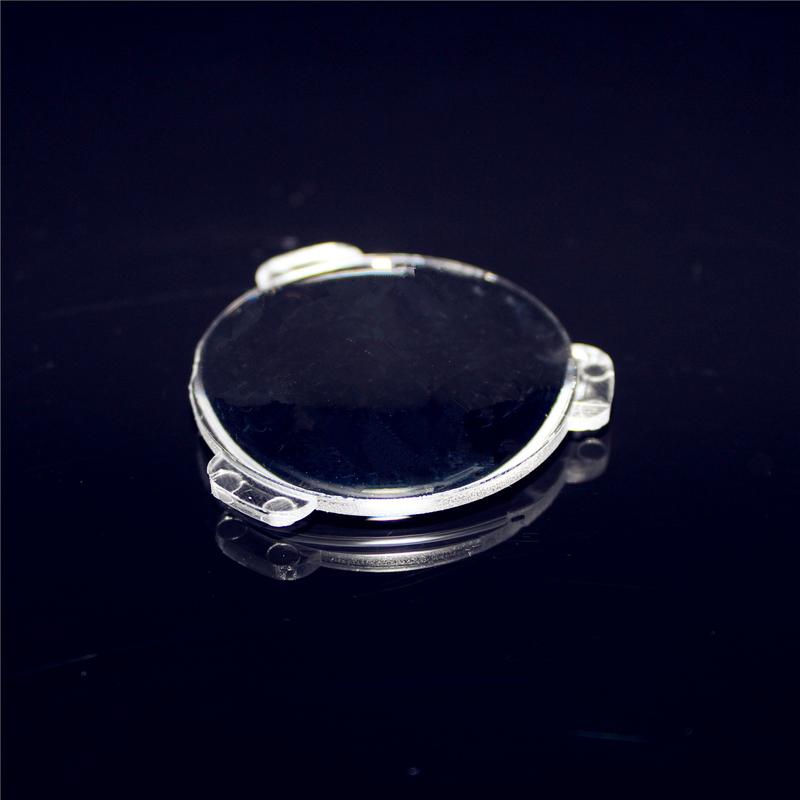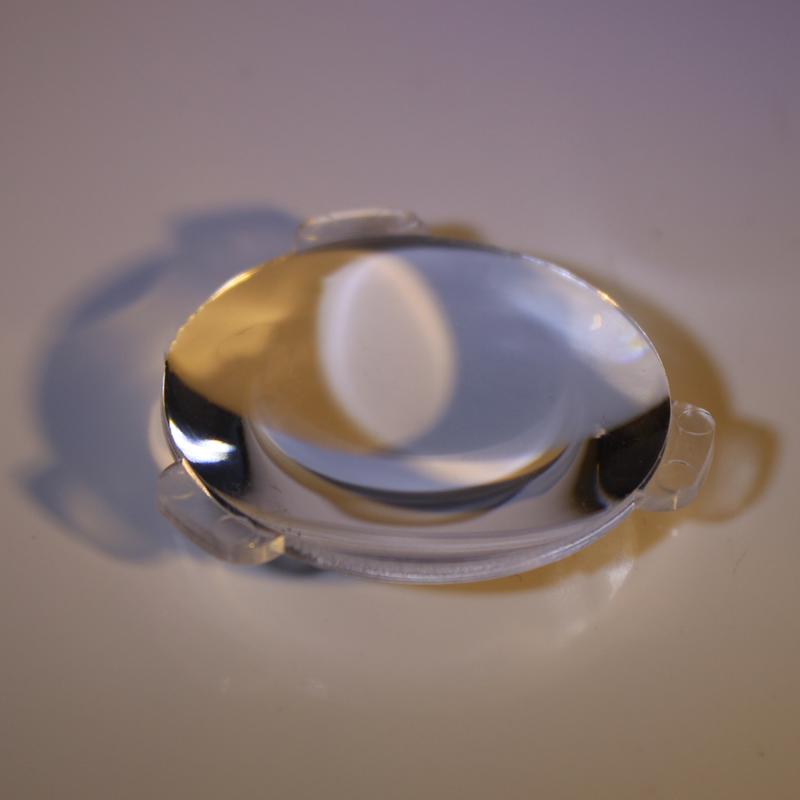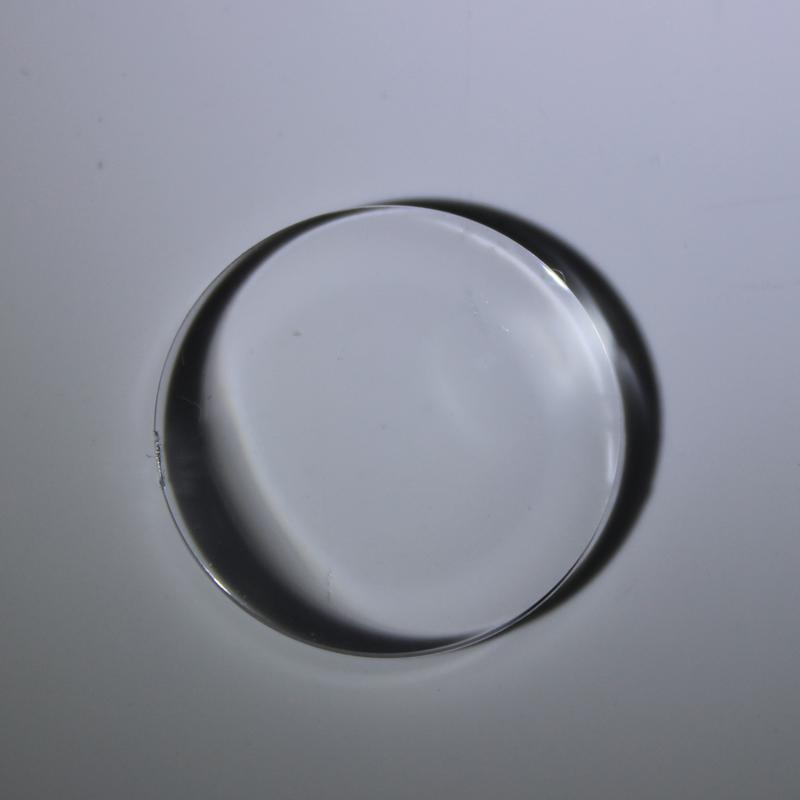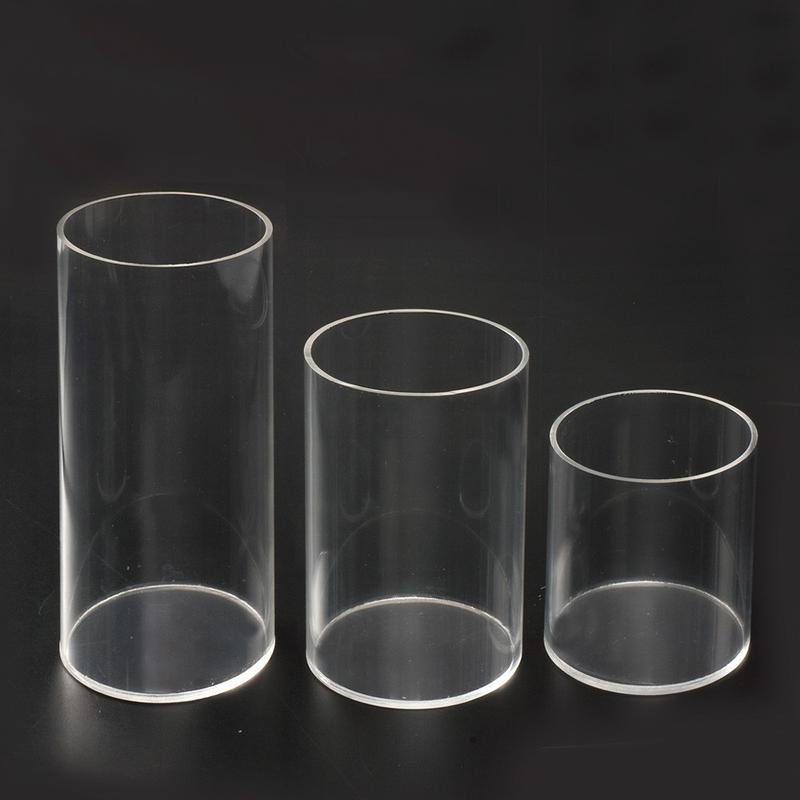The scope of application of plastic optics
The use of precision polymer optics is becoming an increasing necessity today as products demand sophisticated light handling components to achieve desired results. Polymer optics can be thought of as an important enabling technology allowing the successful development of many types of devices. Key advantages that polymer optics have over competing glass solutions include lighter weight; the ability to integrate mechanical and optical features; and the ability to reproduce aspheric, freeform, and other complex geometric surfaces.
The unique nature of thermoplastics and of the injection molding process itself demands a disciplined approach during all phases of manufacturing, from component design through prototyping and finally to production. The best outcomes are achieved when the design team (usually made up of optical and mechanical designers) understands the manufacturing process and works closely with a manufacturer who specializes in this field.
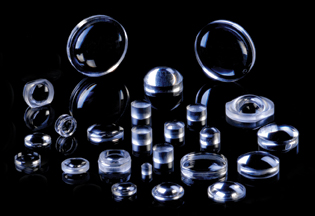
Scope of application
Essentially any application that involves an optical component, whether for imaging, scanning, machine vision, medical, or general illumination, may be a candidate for employing a polymer optic. The list of potential applications is large and growing.
Polymer optics are often found in supermarket bar-code scanners (both laser scanners and 2D readers), lidar and other time-of-flight applications, and in many various sorts of medical applications starting from point-of-care (POC) assay containers to lighted surgical retractors. they're also utilized in document scanners and in sophisticated laboratory equipment like spectrometers and cleanroom particle counters. As applications still grow, polymer optics are often found in telecommunications products and are often used with microstructured surfaces like microlens arrays and diffractive optical elements. Polymer optics are used routinely in ever-growing LED illumination applications.
Other examples include imaging systems for near-to-the-eye displays. Polymer optics are frequently found in PC peripherals, like videoconferencing cameras and microscopes, and in consumer devices like compact disk and DVD players, and smartphones.
As noted above, this big selection of applications results from the key advantages that polymer optics have over competing for glass solutions. Since these advantages are directly associated with the materials and therefore the injection-molding process it's critical to know the materials and the manufacturing methods used.
The principal optical molding materials
The principal optical molding materials are acrylic, styrene, polycarbonate, cyclic-olefin polymers (COPs, like Zeonex and Zeonor, manufactured by Zeon Chemicals), and cyclic-olefin copolymers (COCs, like Topas, manufactured by Topas Advanced Polymers). There are other specialty resins like Ultem (polyetherimide, or PEI, manufactured by Sabic), and polyesters, (such as OKP-4 and OKP-4 HT, made by Osaka Gas Chemical). All of those materials are thermoplastics, which suggests they will be heated and cooled repeatedly. This category of polymer is different from the optical-grade thermoset plastics, which, once cured, aren't ready to become molten again.
Mechanical properties

Thermal expansion — The coefficient of thermal expansion for optical plastics is approximately an order of magnitude greater than that of glass. this is often a crucial property to think about when designing an optical system that's intended to work over a good temperature band. If the system can't be refocused, other techniques must be considered to realize thermalization.
Maximum operating temperatures — in comparison with glass, most optical thermoplastics have a reasonably low glass transition temperature (Tg). this will range from 80 to 90 °C for polystyrene and acrylic to about 130 °C for polycarbonates, Topas, COPs, and a few polyesters. Some specialty polymers have higher Tags. for instance, Grilamid (a transparent polyamide) features a Tg of about 160 °C. Ultem features a Tg of about 217 °C.
Water absorption — Most thermoplastics (with the exception of COP and COC materials) will absorb water, which can cause an optic made from this material to vary dimensionally. for instance, acrylic will absorb approximately 0.3% water over a 24-h period. During an equivalent period, a COP or COC material may absorb only 0.01%.
Weight — For a given volume, polymers are lighter weight than glass. due to this property, and optic molded from a thermoplastic will weigh but a corresponding glass optic. Moreover, thermoplastics offer higher impact resistance (this is particularly true of more ductile material like polycarbonate).
Optical properties
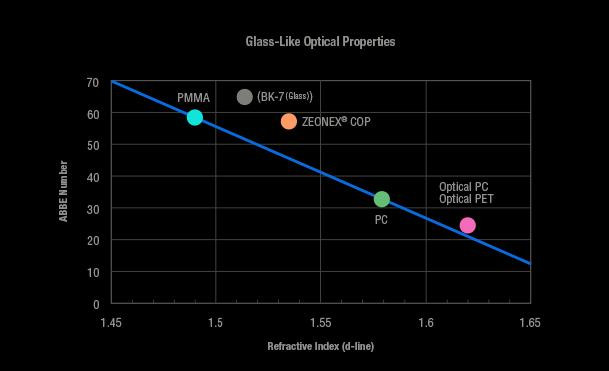
Index of refraction, Abbe number — The range of obtainable indices of refraction is narrow in comparison thereto available for glass. Acrylics and COP materials behave more like crown glass types (having Abbe values within the mid-50s), with an index of refraction of about 1.49 and 1.53, respectively. On the opposite hand, styrene and polycarbonate behave more like flints (with Abbe values within the low to mid-30s) and having an index of refraction of about 1.59,
Change in the index of refraction with temperature (dn/dt) — Polymers will exhibit a change in the index of refraction relative to temperature. The thermoplastic dn/dt is fairly large (about 20 times that of glass) and negative (i.e., because the temperature goes up, the index of refraction goes down).
Transmission — Most optical polymers have high clarity within the broadband visible portion of the spectrum (~400 to 650 nm). for instance, acrylic and a few grades of Zeonex have transmission properties of about 92%. Materials like polycarbonate and polystyrene have slightly lower transmission. Ultem, which has good transmission within the near-IR, might not be suitable for broadband visible applications because it absorbs within the blue end of the color spectrum.

Birefringence — the quantity of birefringence a system can tolerate is a crucial design consideration and will be discussed with the manufacturer early within the process. Some polymers like polycarbonate and polystyrene have a better amount of stress to start with due to their polymer properties. the quantity of birefringence in an optic is often exacerbated by poor part design and/or poor gate location within the mold. Table 2 summarizes the quantity of stress inherent within the different optical polymers. Because birefringence is often difficult to live, a qualitative scoring system of 0 to 10 was used. during this scale, 0 is that the lowest amount of stress, and 10 is that the highest amount of stress.

